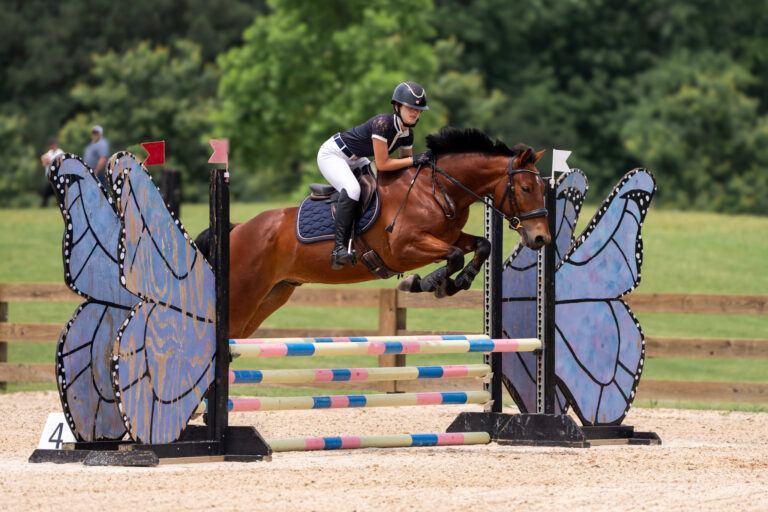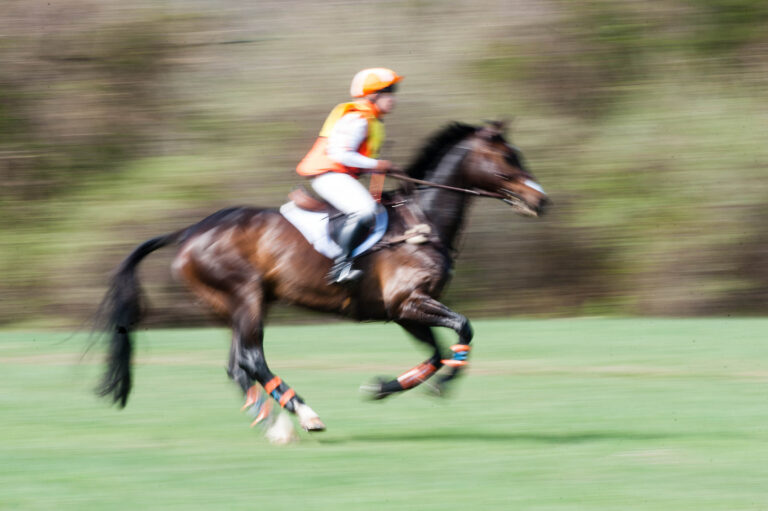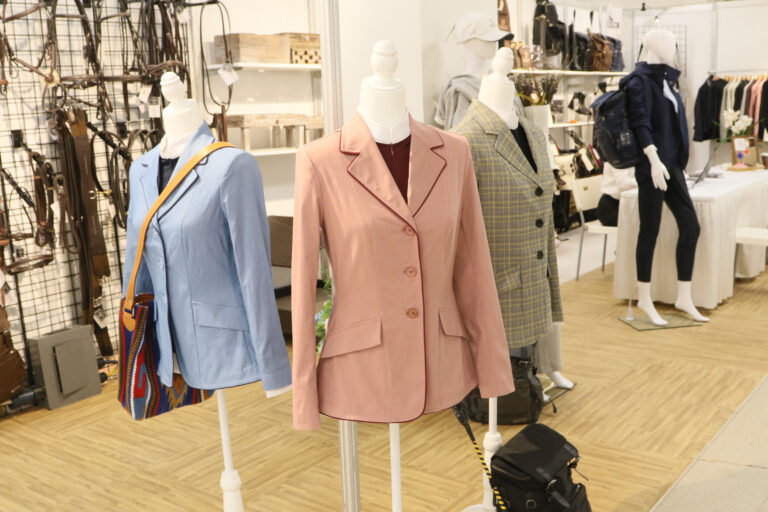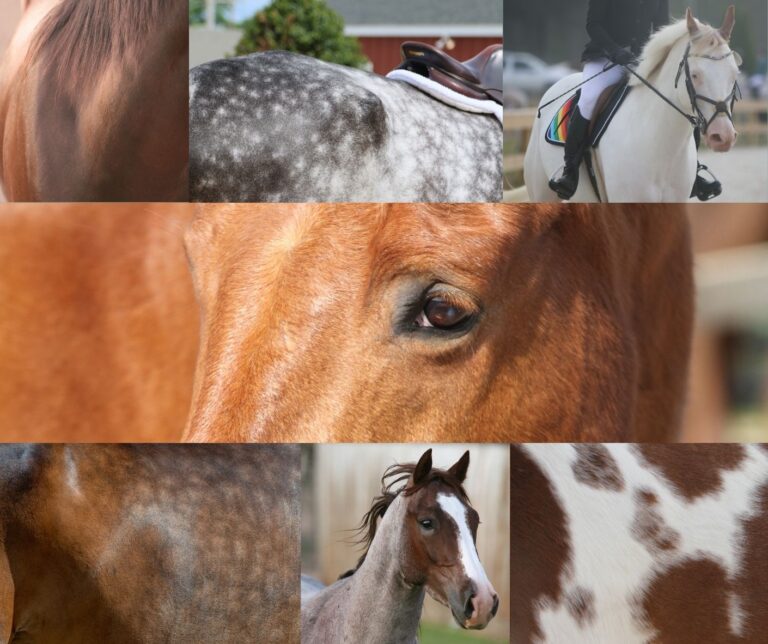Everyone talks about how each horse is different and how they love dealing with different types of horses—and then they put exactly the same equipment on every horse in the barn. Did I miss something? I must have been out of the room when they passed a rule that suiting your equipment to the horse doesn’t matter. I definitely wasn’t around for the rule change that says everyone has to use a cavesson and flash noseband attachment cranked down tight enough to leave permanent grooves in the cartilage of your horse’s nose. (You know I am being sarcastic, right? I can never find the sarcasm emoticon when I need it.) If I did not see so many horses in discomfort from tight nosebands, it would be funny.
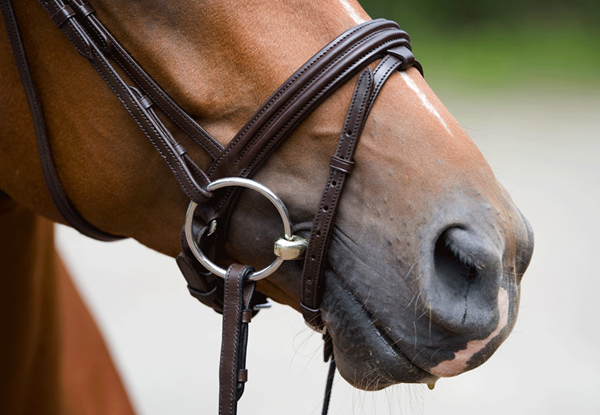
Nosebands that cause permanent damage to the horse top my list of pet peeves—yes, even ahead of bling. In my dictionary, “bling” is any extraneous decoration designed to draw the eye of the observer away from the horse. Bling says, “look at me,” not “look at my horse.” Bling takes a back seat to tight nosebands because it does not cause your horse discomfort and injury. Your equipment (tack) has a great effect on how your horse performs and it can go a long way toward making him comfortable or sore. Yet I see people tacking up their horses using certain bits and noseband combinations because they have seen an elite rider use the same combination, and they wanted to ride like that elite rider. If you want to ride like that elite athlete, one of the things you must do is to educate yourself about and understand the tools of your trade—your bits, bridles, saddles and all the other equipment that you need to train and ride horses.
Make Educated Choices
Open any tack catalog and you will find an incredible array: saddles and bridles, blankets, bits, grooming brushes—even books. (Make sure you linger in the book section. I have several in there I know you are just going to love.) Whatever your horse needs, you can find it in a catalog. The important part is not to buy one of each from the bit section but rather to know when each particular bit is suitable for your horse. It is not enough for you to have all the tools. You need to know when to use any particular tool, which horse needs it and, just as importantly, which horse does not need it.
Any tool can be exactly right for your horse right now or exactly wrong. It is up to you to know the difference. Even the most basic tasks require some understanding of the effect of a particular tool. For example, there is a big difference between a body brush and a dandy brush. If you use a dandy brush on your horse’s back instead of a body brush, he will quickly let you know that you made the wrong choice. Unfortunately, when you use other tools inappropriately, your horse may display more subtle signs of discomfort.
Speaking of discomfort, for instance, let me return to the topic of nosebands. You would be surprised how often I find that riders have adjusted the cavesson part of their noseband-and-flash attachment incorrectly. The cavesson should be two fingers below your horse’s cheekbone. When it is too low, it will trap your horse’s mouth between the bit and the cavesson. The last time I encountered this error, the rider explained that she had her noseband cranked so tightly because her horse had started “flipping his head” and “avoiding the contact”—that is, she had tightened it to prevent her horse from avoiding the contact. The rider did not realize that with her cavesson adjusted so low, she was pinching her horse’s mouth between the bit and the cavesson every time she used the bit. Sigh. Once we adjusted her equipment correctly, her horse relaxed and his symptoms of pain-avoidance disappeared.
In general, riders understand that their saddle should fit their horse and they do a fair job of making sure the saddle is comfortable for their horse. However, riders pay little attention to how the saddle fits them. Partly this is because riders, especially event riders, tend to select “all-purpose” saddles. In this instance, however, all-purpose means no-purpose because a saddle of this type will prevent you from being in the correct position most of the time.
The next time you are in a tack room, borrow a dressage saddle and a show-jumping saddle and put them on saddle horses, side by side. Look at the shape of the skirts of the two saddles, and imagine where your knee and leg should be placed on each saddle. Chances are that you can visualize yourself in the show-jumping saddle. When seated, you should have a 90-degree angle behind your knee for show jumping.
Now, imagine where your knee and leg would be in that show-jumping saddle if you let your stirrups down to dressage length. Doesn’t work, does it? If you rode with longer stirrups, the flap of the jumping saddle would be too far in front of you and the balance point of the saddle (the swale) would be too far back, causing you to fall behind the motion when your horse moved.
Alternatively, if you imagine you are riding with the dressage saddle’s stirrups at show-jumping length, you would quickly see that your knees would extend out beyond the knee rolls. I don’t want you to actually try to jump in a dressage saddle, but I hope my point is well taken. A saddle that tries to suit the requirements of both these disciplines ends up suiting neither.
A Bit of Advice
Just as with all the other tools of our trade, we need to understand bits and their various functions. Before we can decide what sort of bit we need, we have to determine what sort of horse we have. In broad, general terms, horses misbehave in three ways: They pull down toward the ground, or lock their jaw and pull straight ahead, or they carry their head and neck too high and completely invert their back. Each of these conditions requires a different bit. For example, the horse who pulls down and out needs some form of gag snaffle to help you rebalance him.

Speaking of bits, how about the young lady who shows up for a jumping lesson with her horse tacked up in a gag snaffle and a running martingale? A gag snaffle tends to elevate your horse’s head, while a martingale tends to keep your horse from lifting his head. To paraphrase Sigmund Freud, what does that rider want? She is using two antithetical pieces of equipment, and her horse will show his discomfort by becoming increasingly problematic.
For horses who lock their jaws and pull straight ahead, I usually recommend a bit with some sort of corrugated surface—a cherry roller, magenis snaffle, Dr. Bristol or something similar. When horses invert, I want you to try a bit with a curb chain, a Kimberwicke or pelham, and I suggest you use an adapter that attaches to both rings and connects to a single rein with either. If you are having trouble with your horse, attempting to use a bit that has two reins instead of one is probably a needless complication right now.
Not every horse responds immediately to a bit change. Try various types until you find one that helps your horse become more controllable.
I have given you a couple of simple illustrations of studying the tools you use to ride and train. However, a multiplicity of tools is available to help us effect every possible action we want to take with our horses. Some of the tools are almost magical in their usefulness, and some are actively detrimental. It is up to us to learn the tools of our trade. Our horses trust us to make correct decisions, and we have to make sure those decisions are well-informed.
This article originally appeared in the September 2015 issue of Practical Horseman.





